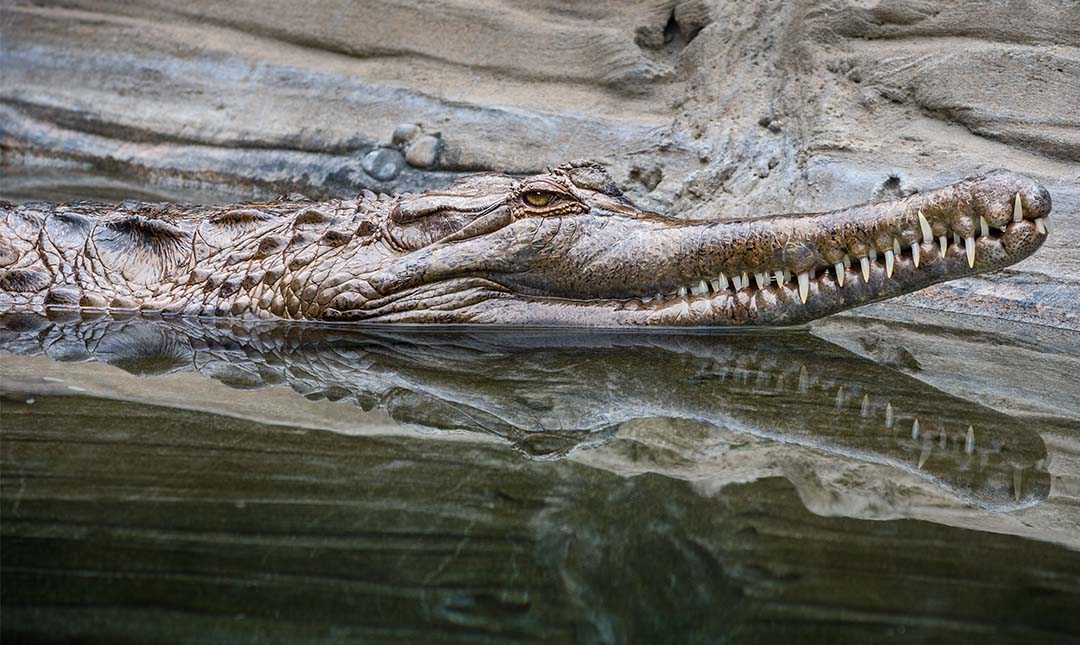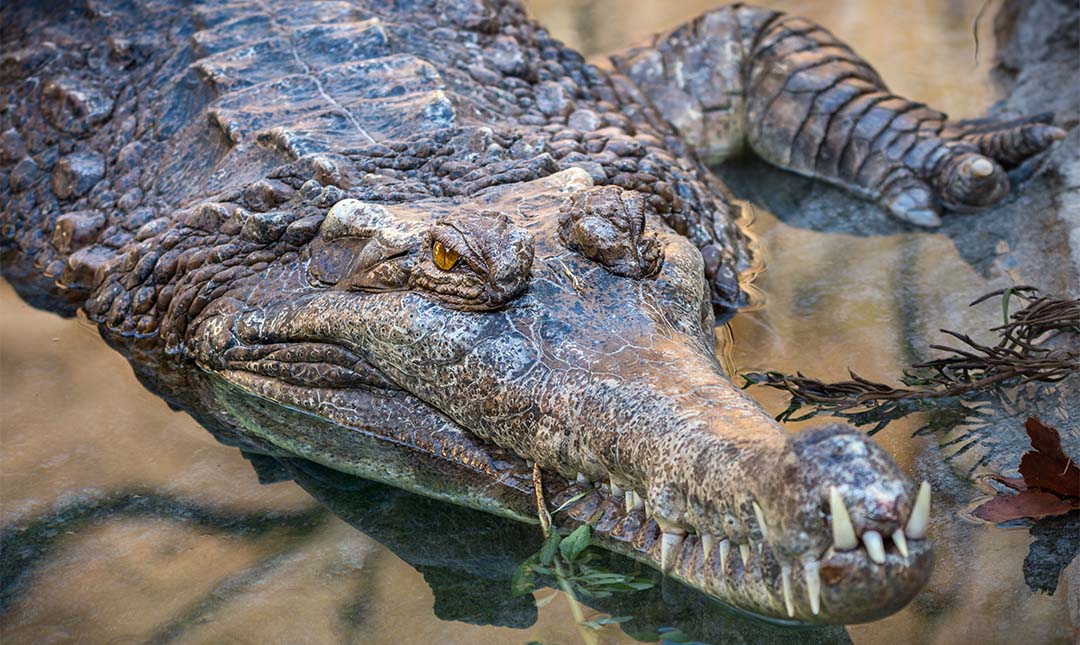About
This crocodilian from Southeast Asia has a long narrow snout with up to 84 interlocking teeth, an adaptation for catching fish. Other adaptations for their aquatic lifestyle include eyes, ears, and nostrils positioned on the top of their heads so that they can see, hear, and breathe when almost totally submerged. Long, muscular tails propel them through the water. They catch fish by remaining motionless in the water with their jaws open, waiting for fish to come within striking range. Sensory organs known as dermal pressure receptors in the skin and scales sense movement in the water and help them locate prey.
Tomistomas have body armor consisting of thick skin and scales reinforced with bony plates called osteoderms. These structures not only offer protection, but also function as solar panels to help raise body temperature. Tomistomas have good night vision with pupils that contract to a vertical slit during the day but open wide at night.


Habitat
A few scattered populations survive in freshwater lakes, slow-moving rivers, and swamps in Malaysia, Sumatra, and Borneo. Signification portions of tomistoma habitat have been lost to the proliferation of oil palm plantations.
Diet
These carnivores eat primarily fish, but will also eat small invertebrates, birds, reptiles, and monkeys.
Physical Characteristics
Males are significantly larger than females, reaching lengths of 10 to 16 feet. Weight ranges from 200 pounds for females up to 550 pounds for males. Lifespan in about 60 to 80 years.
LOCATION WITHIN THE ZOO
You’ll find this species in Crocodile Creek, next to the LAIR. See Zoo Map.


